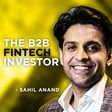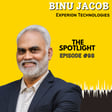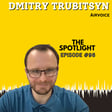
A Founder's Guide to Legal Contracts | Aditya Pandranki (Doqfy)
"India's complex regulatory landscape, often seen as a hurdle, can actually be a powerful competitive advantage for startups."
Aditya Pandranki shares how Doqfy strategically leveraged the intricacies of varying state-wise stamp duty regulations, turning a common business challenge into a unique selling proposition and a significant moat.
Aditya Pandranki is the Founder and CEO of Doqfy, a B2B SaaS platform revolutionizing contract lifecycle management in India, founded in 2019. Drawing from over 18 years in IT and pivotal experience in banking with institutions like Standard Chartered, Aditya launched Doqfy, which now empowers over 1,000 businesses across 10+ industries. The platform has managed over 100 million contracts, achieved a $1.3 million revenue in FY24 (approx. Rs 9.05 Cr) with a stunning 110% year-over-year growth, and has successfully raised around $2 million in funding after an initial bootstrapping phase of Rs 25 lakhs.
Key Insights from the Conversation:
👉The critical legal necessity of stamp duty for contracts in India and why it's often misunderstood or sidestepped.
👉A deep dive into various digital signature mechanisms like Aadhaar eSign, DSC tokens, and electronic signatures, including their validity and use cases in India.
👉Doqfy's strategic evolution from a focused contract execution tool to a comprehensive Contract Lifecycle Management (CLM) platform.
👉The transformative role of AI and NLP in modern LegalTech, automating contract drafting, review, summarization, and proactive risk assessment.
👉Actionable strategies for customer acquisition, market penetration, and scaling a B2B SaaS business tailored for the Indian enterprise landscape.
Chapters:
00:00:00 - Introduction: Aditya Pandranki & The Doqfy Mission
00:01:25 - The Personal Story Behind Doqfy's Founding
00:03:15 - From Contract Execution to Full CLM & COVID's Impact
00:04:22 - When is a Contract Legally Binding in India?
00:05:25 - Stamp Duty: Why It's Crucial (and Often Skipped)
00:18:02 - Doqfy's High-Volume Use Cases: Banking & Beyond
00:24:00 - Automating eStamping & The Tech Behind Doqfy
00:27:00 - Decoding Digital Signatures: Aadhaar, DSC, Electronic Explained
00:43:45 - Doqfy's Revenue Model & Market Landscape
00:49:30 - The Role of AI in Modern Contract Lifecycle Management
01:00:15 - Client Acquisition & Scaling a B2B LegalTech in India
01:02:41 - Doqfy's ARR & Future Growth Projections
#LegalTech #ContractManagement #eSignature #eStamping #CLM #SaaS #B2BSaaS #StartupIndia #IndianStartups #Entrepreneurship #BusinessLaw #DigitalTransformation #AIinLaw #FounderThesis #MakeInIndia #DigitalIndia #RegulatoryMoat Disclaimer: The views expressed are those of the speaker, not necessarily the channel.



















